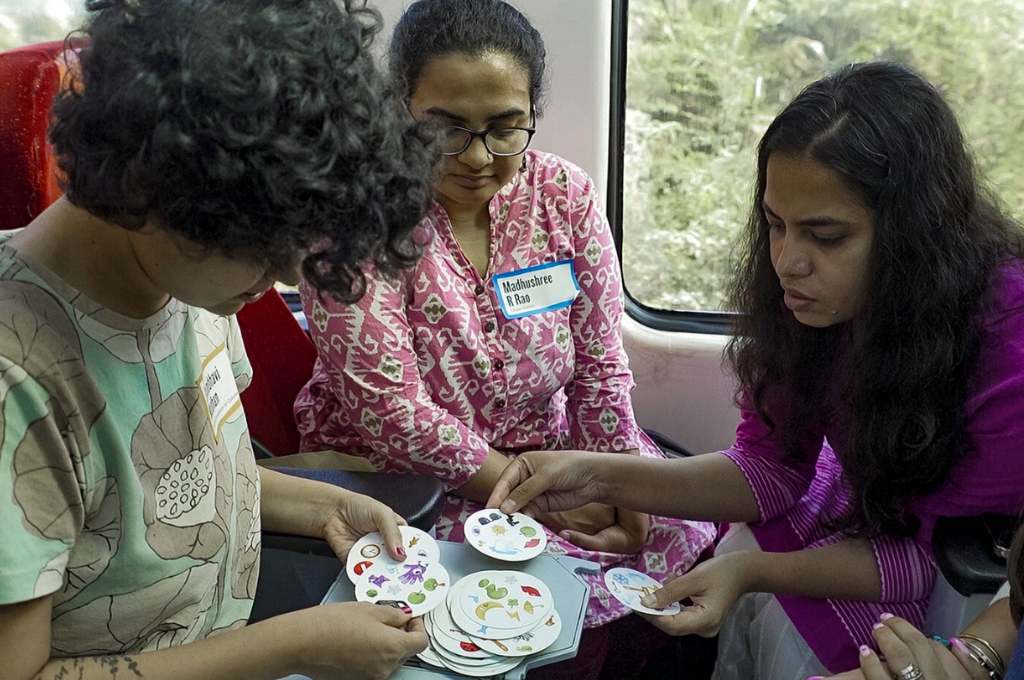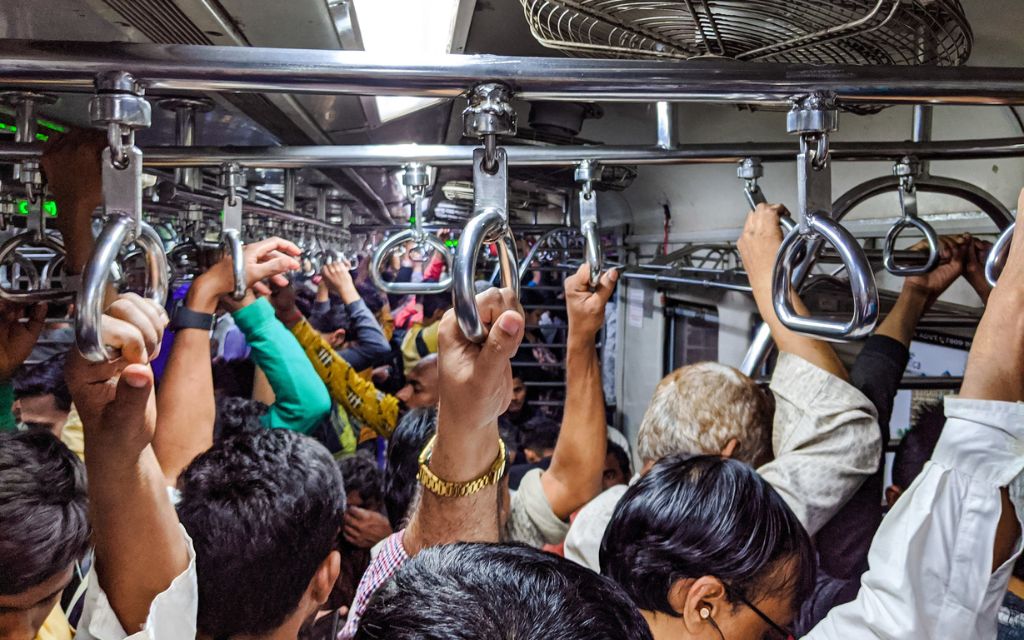Recently, our team put together an Excel sheet of all the events we attended last year. Using a loose method of calculation involving factors such as the number of days, number of team members attending, travel time, and preliminary work put in, I found that as a team we had clocked 60 full days in convenings.
Have conferences and events really increased? And if we are spending so much time convening and being convened, should we critically examine events and their purpose as closely as we look at programmes?
The Planner Pulse survey and the North Star/Cvent Meetings Industry PULSE survey corroborate the fact that in-person industry events have steadily grown through 2022 and 2023. In the 2024 survey, 58 percent of event planners reported that they will be planning more meetings in 2024 than they did in 2023. As it is hard to come by similar data for other countries, that too disaggregated by sector, I reached out to fellow social sector colleagues who shared that they had also noticed an increase in the number of meetings and conferences. However, their larger issue was that the events were not as energising as they hoped.
In-person gatherings, meetings, and congregations offer the space and opportunity for solidarity, ideation, innovation, collaboration, and, most importantly, celebration. So, getting events right feels important. Not to mention that events also take up considerable time, effort, and money. If programmatic impact is tracked and evaluated so closely, shouldn’t events have a strong ‘why’, and a post-op on how closely the event delivered against the ‘why’?
In the spirit of collective inquiry, we approached some organisers whose events we found particularly meaningful last year, and asked them to share how they had gone about designing those spaces and events. These include Agami, a nonprofit advancing ideas of justice; Co.labx, a coaching organisation that helps start-ups build a high-performing leadership team; India Climate Collaborative (ICC), a leading climate collaborative comprising donors, high-net-worth individuals, social entrepreneurs, and nonprofits working on climate solutions; The Gender Lab, a nonprofit working with adolescents and youth in urban and rural communities to reshape existing gender narratives; and Reap Benefit, an organisation engaging young people to solve local climate and civic issues.
We also examined our own practice of convening and, interestingly, some common principles emerged from all of us who are interested in harnessing the real potential of in-person gatherings.
These principles are by no means exhaustive, neither are they fail-proof. What they are is a good starting point to build better, dynamic spaces for human interaction.

Principle 1: Intention is not a lodestar, but a continuous animating force
Anyone planning to host an event comes up with some reason for bringing people together. This is typically called ‘setting an intention’. But this does not automatically mean the intention will be served. Every aspect of the event—from the design to the schedule and from the physical space to the logistics—needs to be constructed in a way that delivers against the set intention.
When we spoke to Varun Hemachandran, senior curator—lead, OpenNyAI at Agami, he emphasised that the intention behind a gathering must trickle down to every level. In many events, there is a tendency to break down roles into operational groups such as hospitality or logistics. However, not enough attention is given to aligning every role to the larger intention of the event. For example, at the Agami Summit in December last year, the volunteers handling food were guided by the following ‘intention question’: How can we make the act of eating together a joyous, connecting, and grounding one? This one question, and similar questions for other roles, ensured that every volunteer was aligned on the larger experience the summit was designed to create versus managing lists of tasks they needed to check off. Similarly, Arhan Bezbora, founding partner at Co.labx, shared that oftentimes intention becomes just a set of words or a high-level direction that is not at the forefront in the minds and hearts of the organisers and facilitators. As a result, the actions of the organising team can drift away from the intention, and the event can end up feeling inauthentic.
According to Kuldeep Dantewadia, co-founder of Reap Benefit, while terms such as ‘collaboration’, ‘ecosystem building’, and ‘safe spaces’ may look impressive on promotional materials, the true test is whether these intentions are embodied in concrete actions and in the collective ethos of the organisers.
From our own experience, we now strongly believe that intention matters, but it needs to be thoroughly queried using multiple ‘why’s: Why are you bringing people together? Why in person? Why for x hours and not more/fewer? Why 100 people and not 2,000 (or vice versa)? Once this is clear, the schedule is designed such that it responds properly to the many ‘why’s.
Principle 2: Light agendas, held strongly
Have you looked at a conference agenda and felt fatigue tug at your temples? You are not alone.
The unanimous no-no from all the organisers we spoke to was in having back-to-back or too many panels. Yet conferences continue to run panel-heavy formats, with too many panelists, shallow moderation, a loss of control over time, and very little real engagement with the audience. This is not to say panels, as a format, don’t work. The point is that good panels are very hard to put together. Even round tables, workshops, showcase events, and networking and pitch events can be designed more thoughtfully.
Here are some concrete design principles and practices that Co.labx follows when arriving at an agenda:
- Put yourselves in the shoes of the user and visualise their journey and experience.
- Sense and validate the needs of the participants through a mix of conversations, pre-event survey forms, and observations.
- Integrate clear routines and rituals in the agenda that build predictability and rhythm (for example, starting with ‘warm-ups’, ending with ‘cool-downs’, doing regular ‘playbacks’ to mirror back the progress and wins).
- Keep open spaces in the agenda for attendees to take ownership and drive action.
- Continuously capture key ideas, insights, and turning points that emerge through Post-its, images, screenshots, audio clips, and other mediums.
- Incorporate stillness practices to help people slow down.
- Close the loop with participants and follow up on next steps.
If we want attendees to actually participate, lighter agendas work better than busy ones, and three long sessions throughout the day are better than six short ones. A real ‘discussion’ or ‘brainstorm’ cannot happen in 15 minutes, unless the group size is under five people. Having flexibility in the agenda, and trusting the group to fill the time with their own inputs, gets people closer. Moreover, it builds a sense of ownership among participants because they see themselves contributing to the agenda, rather than passively consuming what the host has planned for them.
There are also certain rules of thumb that can guide you towards designing a better agenda and on-day experience. Assuming you know your ‘why’ by now, before deciding the ‘how’, which is usually the panel, session, keynote speech, activity, or discussion topic, ask yourself:
- Would I want to be in this session at someone else’s event?
- At which point in this session will people start looking at their phones?
- Will the main contestations happen inside the room or outside or on the sidelines/more privately?
- Are people sitting in one place/space for longer than 90 minutes without any change in energy? This in and of itself isn’t a bad thing but the quality of conversation needs to be high if people are to stay grounded in one place for a long time.
- Is the session that is likely to run over slotted right before lunch?
According to Urvashi Devidayal, senior adviser at ICC, multiple formats are key to sustaining the attention of the audience. Having something completely off topic, something that is fun or emotional, also helps add to the stickiness of the event. For instance, ICC has hosted drum circles, sharing circles, boat rides, and numerous other sessions that have no direct relationship to the topic everyone has gathered to discuss.
Principle 3: Execution eats design for breakfast
Every idea, no matter how good, fails when executed poorly. This sounds banal because no one sets out to execute badly. Yet, repeated internal dry runs, dress rehearsals, and run sheets are not part of the run-up for many organisers.
When we reached out to Akshat Singhal, co-founder and director at The Gender Lab, he emphasised the importance of inclusivity while planning any event. This comprises considerations for dietary preferences; translations; disability inclusivity (guide for visually impaired individuals, wheelchair access, seating arrangements); toilet access for all; volunteers to guide the participants; programming activities that are mindful of accessibility; and being collaborative and flexible with participant engagement to make it comfortable for people who might find these challenging.
Overall preparedness also helps in being nimble on the day because participant needs emerge, especially when diverse groups are brought together. Say you want to organise a discussion with a group of farmers focused on nature-based solutions. One approach could be to randomly divide them into groups, moderate the discussion, do the work of enumerating and synthesising each group’s points, and then share it back with the whole group. The other could be to speak with them before the meeting or event, look at all the data generated through those conversations, organise these into a few themes/tracks, and run a deeper discussion on the day based on what has already been established.
This takes more effort, and may not always be feasible, but it dramatically improves the progress one can make in group sessions. The use of pre-designed materials including worksheets, cue cards, and surveys also helps take the load off a bit on the day, and leaves one with handy pieces of knowledge that are easier to digest post the event.
Given the fast pace of business and society today, getting people in a room is a luxury in itself.
At our recent active citizenship portfolio retreat, we tried using written notes taken on Day 1 as raw inputs into designing the discussion topics and flow for Day 2. Active citizenship is one of our key portfolios and we were keen to understand how our partners were responding to the rapid digitisation of civic life. To mine the experience of 20 partners, we used cue cards where they wrote their experiences from their specific contexts. On Day 2 we collapsed the insights into broad buckets, omitted parts where full consensus already existed, and managed to have a spirited discussion on grey areas in just 45 minutes because a lot of the background had already been established.
Principle 4: The shelf life of a conference can be extended
The final piece is about what happens once the event is over. We ourselves have seen the value in sharing materials back, making good on conversation threads that were opened in person, and doing offline follow-ups. Last year, we hosted an all-partner gathering in Kochi, where we brought together 100 partners (250 people) to explore synergies and build solidarity. Six months after this retreat, 70 percent of attendees shared that they were initiating or collaborating with organisations that they had met there. This gave us confidence in the power of intention and design, and in the value of building on moments from our convenings much after the event had ended.
Given the fast pace of business and society today, getting people in a room is a luxury in itself. And so how to gather well is a question worth considering irrespective of the industry one belongs to. As we mark events in our calendars this year, I am curious about ways in which others think about bringing people together with a deeply human purpose.
—
Know more
- Read this article to learn more about how to put together a good webinar.
- Read this article to learn more about how to get the most out of a conference.





